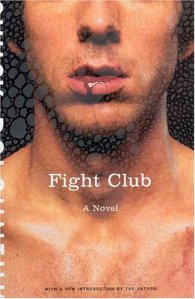
What Žižek tells us about the anxiety of the Other in his Welcome to the Desert of the Real seems to be working in the staggering Milos Forman movie: One Flew Over the Cuckoo’s Nest. What is this about?
In his seminar on Anxiety, Lacan designated the true aim of the masochist: it is not to provoke jouissance in the Other but to generate anxiety. That is to say, if the subject acknowledges/admits his submissive position in the game, he also wants to make the rules and precisely this rule-making act is what makes the Other anxious: just think of the “innocent” rape fantasies.
For example in the movie, Choke a woman gets her desire fulfilled by meeting up strangers telling them the script (i.e how she wants to be “raped”) in great details- she admits her submission, but it is exactly which gives her the upper hand during the “play”. The Other might find the situation hard to control, that is why, for example in this movie, Victor leaves the room, being perplexed by the exact wishes from her.
In another recet reading of mine, The Collector, we can also recognize this pattern: the castrated character Frederick willingly admits his inability to cope with his dream having come true- hence the Lacanian “curse”: we should be aware what we wish for, it might come true.
In the Forman movie, these mechanisms of setting the rules by the lunatics shows the growing tension and anxiety within the staff, precisely because their professional reaction to subversive elements such as McMurphy only involves ECT ( abbr. for electroconvulsive therapy). The method might mute the deliquent to a braindead state, but this is exactly what impotent person does: they annihiliate the weaker to prove his potency, no matter what. This is the most-inner fear of the staff: the ECT-machine embodies their inability to cope with the ‘lunatics’. Instead of curing therapy (think of how Billy’s stuttering stopped after a night spent with a hooker), the choose a pervert method of humiliating attitude towards the inmates.
Within this heterotopia (Eastern Oregon Correctional Institution, Pendleton, US-OR), we can see the weakness of the medical Other: the the able body is the image of the Other, here, are the ‘lunatics’ and ‘perverts’ different from Nurse Ratched – whose name refers to ‘wretched’?











